I like Buenos Aires. I have been coming here for more than 30 years, but the city never fails to amaze me. A building, a nice balcony, some stucco front decoration. A demonstration, a few business suits, or skimpily dressed women in summer, barely covering the essentials. The best way to enjoy it is by walking, or – if larger distances are to be covered – by bus; the city has an excellent, dense bus network, mostly air conditioned, and on the throughfares using special bus lanes.
This time we were armed with a little guide book, called “Secret Buenos Aires” (Valerio Sampedro and Hernan Firpo, Jonglez 2016), listing a whole range of lesser-known rarities to be discovered. Not all are our taste, not all turn out to be worth the detour, but it does give us another reason to wander around the city. Below a few observation, from a day’s walk, including some of the gems from the book.
1. Pasaje Rivarola is a small street in the city centre with a row of buildings on either side, five storeys high, and perfectly symmetrical – well, except for the air conditioners that have been added later. Originally, beginning of the previous century, these were created as offices for an insurance company, but in the 1950s the buildings were converted to apartments. The clock, visible of the photo to the left, is a remnant of The Clock Cemetery, at one time a famous clock shop with an impressive collection (in Secret BA).
2. A little vegetable shop, as so many in Buenos Aires. It is amazing that these neighbourhood shops still survive.
3. A typical building in Buenos Aires, unfortunately falling apart – which is also typical for quite some smaller, older building, in the city. The restaurant downstairs has also not survived.
4. The Palacio Barolo was built between 1919-1923, by one Mario Palanti for Luis Barolo, a successful cotton farmer who had arrived 30 years earlier in Argentina. The design of the building was meant to honour Dante’s famous Divina Comedia. The Palace is 100 meters high, representing the 100 cantos, it has 22 floors, the same as the number of verses, and is split in three parts, like the book, Inferno, Purgatory and Paradise. Not only the outside of the building is impressive, inside it also very nice, and well-maintained (in Secret BA).
5. Another link to Dante’s Divina Comedia is the Rodin sculpture ‘Le Penseur’ (The Thinker), in a park in front of the Argentine Congress. According to Secret BA, this is one of three original reproductions, yet, there are many more Rodin Thinkers around the world. Nice enough, though, to encounter one in Buenos Aires, which was acquired in 1907.
6. The ‘No Hi Ha Somnis Impossibles’ building was built in 1914 by one Rodriguez Ortega, who was a great admirer of Catalan architect Gaudi. Which is obvious, especially in the conspicuous dome of the buildings. The name means something like ‘There is no such thing as an impossible dream’ (in Secret BA).
7. There are always unexpected corners, or balconies, to be found in Buenos Aires.
8. The building with the Confiteria el Molino has been restored recently – in fact, efforts inside were still continuing, and we were not allowed beyond the front hall. The outside looks splendid, and so do some of the decorations. Unfortunately, the confiteria itself is still closed.
9. The roof of the Congress building has many different rings of decoration. In one of balconies of the individual offices somebody keeps a small palm tree.
10. Central Buenos Aires’ main avenue is called Avenida 9 de Julio, named after the day that Argentina proclaimed its independence from Spain in 1810. Somewhere along this huge avenue is the sculpture of Don Quijote, donated by the Spanish government to Argentina in 1980 on the occasion of Buenos Aires’ 400 year anniversary. Would it be coincidence that it points to the former Ministry of Public Works, with its image of Eva Peron? And its curious sculptures on the side (see below)?
11. The former Ministry of Public Works (now Ministry of Health and Social Development) is an enormous, and not particularly nice, Art Deco construction in the middle of Av. 9 de Julio. Both the north face and the south face are decorated by huge steel murals showing Eva Peron – no introduction needed, I hope. The murals, made by Alejandro Marmo, were installed in 2011. Much less obvious are the two statues on the east side of the building (from Secret BA), one of them carrying a small box and the other holding out her hand behind her back, the traditional way of depicting corruption. The story goes that these were installed last moment upon completion of the building in the 1930s, by architect Jose Hortal, who was appalled by the many bribes he was offered during the construction phase. More curiously, the statues still survive…
12. Jorge Luis Borges, Maria Elena Walsh and Julio Cortazar, or their images, on a balcony in the centre of the city.
13. The Club Museum, in the San Telmo neighbourhood, was designed by Gustave Eiffel, of tower fame. Much of the materials were shipped from France in 1906, and assembled locally in Buenos Aires, culminating in the building for the agricultural tool- and windmill-making workshop. These days the building is a discotheque and nightclub, but the statue on top of it, a blacksmith, reminds us of its original purpose (in Secret BA).
14. In the Plaza Italia metro station, on the main platform, is an adaptation of a painting by Benito Quinquela Martin, a 20th Century Argentine artist famous for his daily life scenes. A 1939 sketch ‘La Descarga de los Convoyes’ (Unloading the convoys) has been projected in polychrome cement on the platform floor, a curious experience in a metro station, where you would expect murals instead. Not easy to find a quiet moment in this rather busy station! (in Secret BA).
15. The morning after. Quite a few people live on the streets in Buenos Aires, and empty bottles are part of the scene. But this particular collection may be a remnant of the Worldcup celebrations after Argentina won the tournament in December 2022!

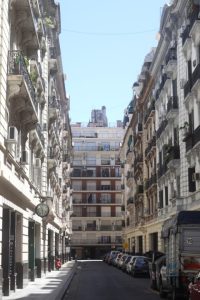
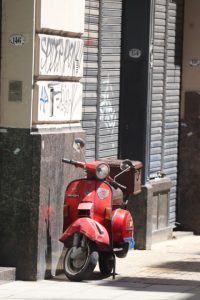
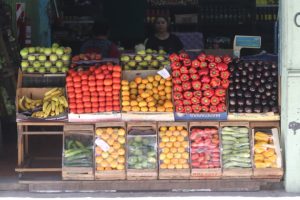
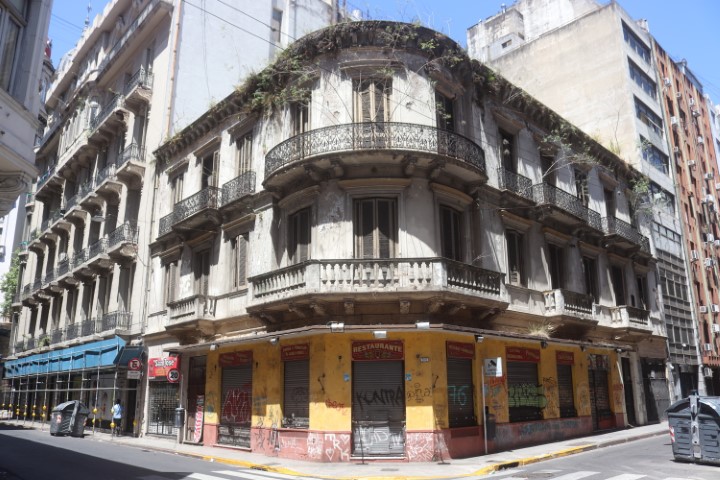
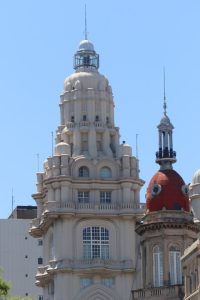

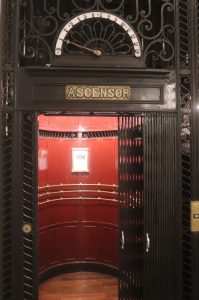
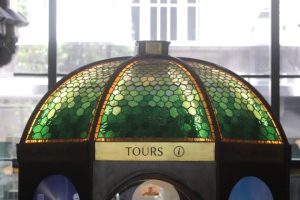
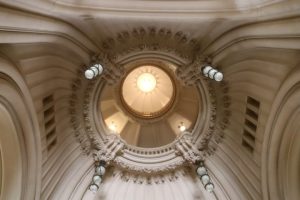

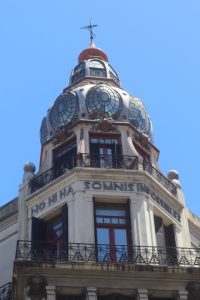
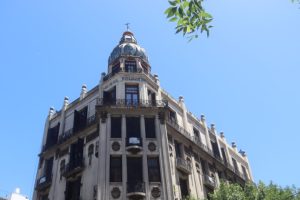

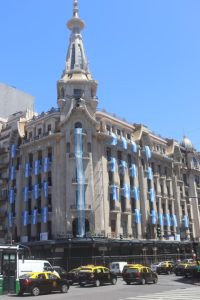
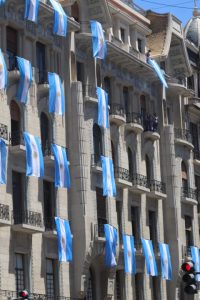
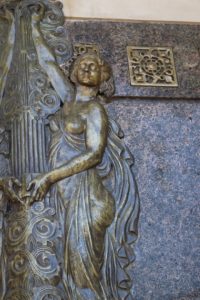

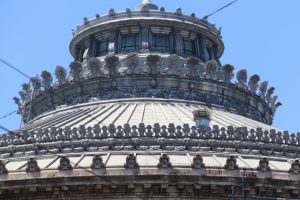
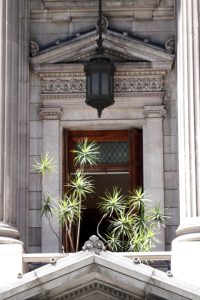
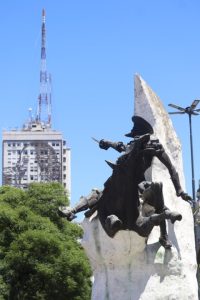

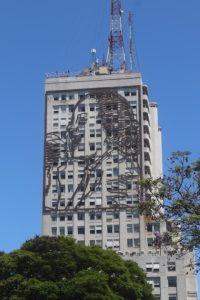
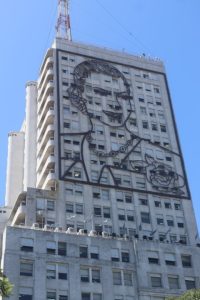
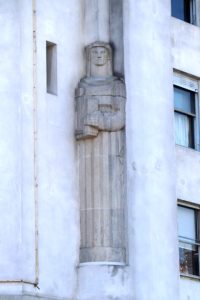



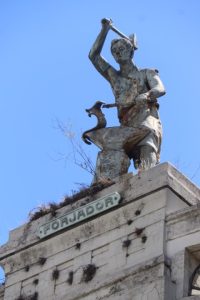

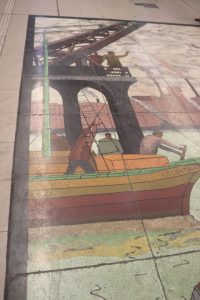
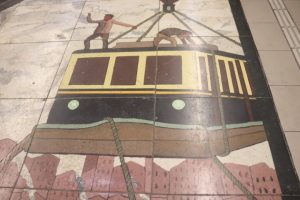
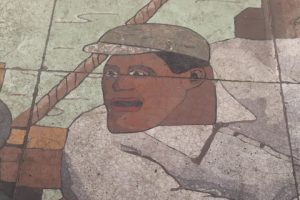
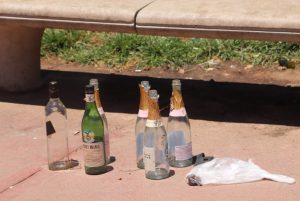











I think you had An interesting walk in Buenos Aires!
Nice buildings and in the end one of the results of the Championship!
Ha Thea, always the first to read my posts, always the first to respond. Nice!!